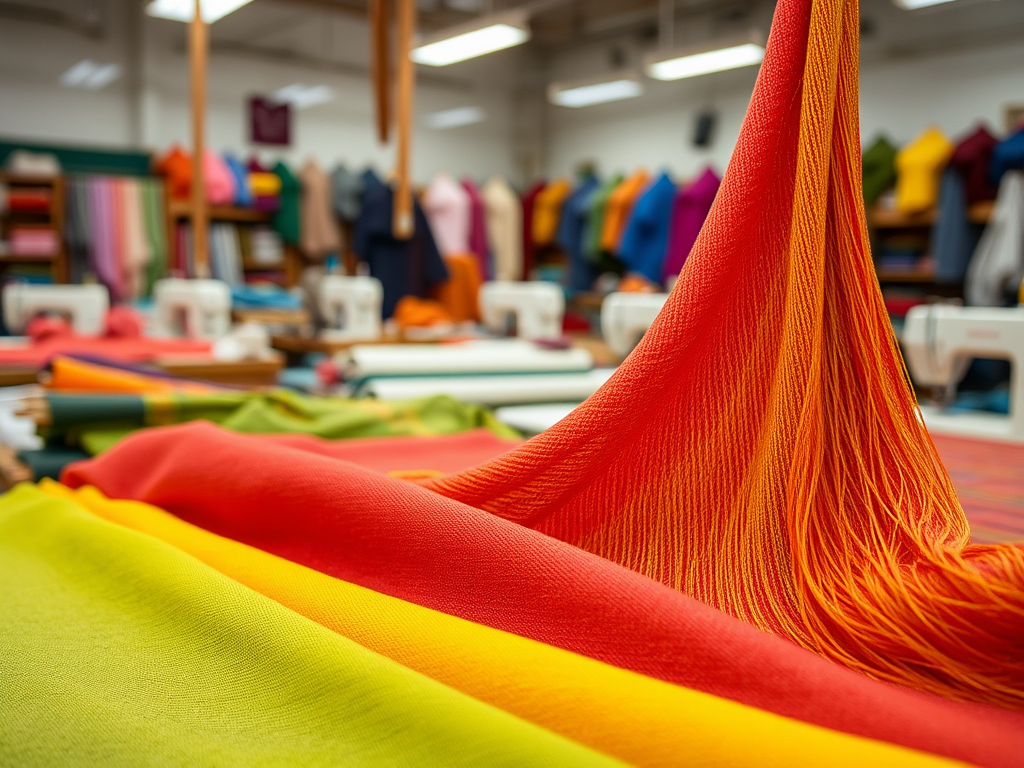Nylon, once hailed as a revolutionary fabric in the fashion industry, is now at the crossroads of innovation and sustainability. As the world grapples with pressing environmental issues, the textile sector, which includes nylon, is under scrutiny for its ecological impact. This article delves deeper into nylon’s dual role: its contributions to sustainable fashion and the challenges it faces in achieving truly eco-friendly status. You’ll discover how advancements in material technology are reshaping perceptions and practices surrounding nylon, while also highlighting the ongoing struggles that actors in the industry must navigate. With the rise of consumer awareness and advocacy for sustainability, understanding nylon’s implications on fashion is more relevant than ever.
The Origins of Nylon

Nylon made its debut in the late 1930s, emerging as the first synthetic fabric created entirely from petrochemicals. Originally developed for use in women’s hosiery, it quickly found a larger role across various segments of the fashion industry, thanks to its durability and versatile nature. Over the decades, nylon’s popularity surged; it became synonymous with modernity and innovation. As fashion changed, so did the applications for nylon, which began to be used in everything from swimwear to activewear. However, its rise also brought about critical concerns related to environmental sustainability, particularly as we became more aware of the consequences of mass production. As sustainability took center stage in fashion discourse, the need to re-evaluate nylon’s role gained urgency.
The Environmental Impact of Traditional Nylon

Production Process
The traditional production of nylon is predominantly reliant on petroleum-based feedstocks, making it a highly energy-intensive process. This method not only depletes finite fossil fuel resources but also leads to significant carbon emissions. The extraction and processing of these petroleum materials contribute to water pollution, habitat destruction, and increased greenhouse gases. Furthermore, the energy consumption involved in producing nylon fibers can be staggering. It’s estimated that the conventional production line emits more than 5.5 tons of carbon dioxide for every ton of nylon produced. Such data underscores the critical need for more sustainable production practices in the industry.
Waste and Pollution
Beyond production emissions, the manufacturing of nylon releases harmful waste and pollutants into the environment. Factories often discharge untreated wastewater that can contaminate local waterways, adversely affecting aquatic life and communities. The process generates chemical byproducts that require safe and responsible disposal, which is not always the case. As a result, the fashion industry faces immense pressure to mitigate these environmental risks. Companies are now challenged to redesign their production processes, incorporating circular economy principles that emphasize waste reduction and environmental stewardship.
Advancements in Sustainable Nylon
Bio-Based Nylon
Recently, the advent of bio-based nylon has demonstrated a promising pathway towards sustainability. Unlike traditional nylon, which is entirely synthetic, bio-based nylon is derived from renewable sources, such as castor beans and various plant materials. This shift significantly reduces the reliance on fossil fuels, aligning production with eco-friendly practices. Numerous brands are starting to incorporate bio-based nylon into their collections, showcasing not only an innovative approach but also a commitment to sustainability. The challenges with bio-based nylon primarily relate to its scalability and market acceptance, but continued research and development may prove fruitful.
Recycled Nylon
In parallel, recycled nylon has garnered a strong following in sustainable fashion circles. Fabrics like Econyl, made from reclaimed fishing nets and other nylon waste products, offer a compelling case for waste reduction. Utilizing discarded materials diverts waste from landfills and helps limit the demand for virgin nylon production. Numerous benefits accompany this practice:
- Reduced waste and landfill overflow
- Lower energy consumption during manufacturing
- Conservation of natural resources by minimizing the need for new materials
| Material Type | Source | Environmental Impact |
|---|---|---|
| Traditional Nylon | Petroleum-based | High emissions, pollution |
| Bio-Based Nylon | Renewable resources | Lower reliance on fossil fuels |
| Recycled Nylon | Post-consumer waste | Reduces landfill waste, conserves resources |
Opportunities for Sustainable Fashion
Versatility in Fashion Design
Nylon’s inherent properties, such as elasticity and durability, make it a versatile choice for designers exploring sustainable fashion options. Its ability to maintain structural integrity allows for innovative designs that showcase both fashion and function. Moreover, nylon can be manipulated into various textures and finishes, providing stylists with a broader range of creative possibilities. By focusing on sustainable production methods, designers can leverage nylon’s attributes while promoting responsible resource use. This duality paves the way for a new genre of fashion that prioritizes eco-consciousness without sacrificing style.
Consumer Demand
With an increasing awareness of environmental issues, consumer demand is shifting towards brands that prioritize sustainability. Buyers are now more inclined to support companies that offer eco-friendly materials and transparent production practices. This shift is not mere trend; it’s a fundamental change in consumer behavior. As more shoppers seek to align their purchasing decisions with their values, companies integrating sustainable nylon can benefit from improved brand loyalty. To meet these expectations, businesses must not only adopt innovative practices but also communicate their commitment to sustainability effectively.
Challenges Facing Nylon in Sustainable Fashion
Cost and Accessibility
Despite advancements, challenges abound when it comes to the widespread adoption of sustainable nylon alternatives. One principal hurdle is the higher production costs associated with bio-based and recycled nylon compared to traditional options. These elevated prices can make sustainable fashion less accessible to consumers, potentially leading to a market divide. Brands striving for sustainability must balance cost considerations with their ethical commitment, often leading to difficult choices. Additionally, scalability in production remains a concern. Developing infrastructures for sustainable nylon production must match demand and be cost-effective to encourage wider adoption.
Perception and Education
Another significant challenge is the ongoing misconception that nylon can never be sustainable. Advocating for nylon’s potential as a sustainable choice is critical in reshaping public perception. Brands have a unique opportunity to play an educational role in this narrative, detailing how advancements in technology can lead to more sustainable practices. Building consumer trust through transparency and education is essential, as many shoppers remain unaware of nylon’s innovative solutions. By fostering an informed consumer base, the industry can shift toward more responsible practices.
Conclusion
Nylon’s journey through the fashion industry highlights a complex interplay between innovation and sustainability. As environmental challenges persist, the textile industry must reevaluate its materials and practices. While traditional nylon poses significant environmental concerns, emerging alternatives such as bio-based and recycled nylon present viable paths toward sustainable fashion. Capitalizing on consumer demand for eco-friendly options opens new opportunities for creative expression in design. However, the pathway is laden with challenges related to costs, accessibility, and public perception. By addressing these issues head-on, the fashion industry can leverage nylon’s properties to create a more sustainable future.
Frequently Asked Questions
- What is nylon made from?
- How can nylon be sustainable?
- What are the benefits of recycled nylon in fashion?
- Are there any brands known for using sustainable nylon?
- What challenges does nylon face in the sustainable fashion industry?
Nylon is traditionally made from petroleum-based materials, although there are now bio-based and recycled alternatives available.
Sustainable nylon can be produced using recycled materials or bio-based sources, significantly reducing its environmental impact compared to traditional nylon.
Recycled nylon helps reduce waste in landfills, lowers carbon emissions, and conserves resources by repurposing existing materials.
Yes, several brands incorporate sustainable nylon into their collections, with notable examples including Stella McCartney and Patagonia.
Challenges include higher costs of sustainable alternatives, limited consumer awareness, and the need for improved supply chain practices.



